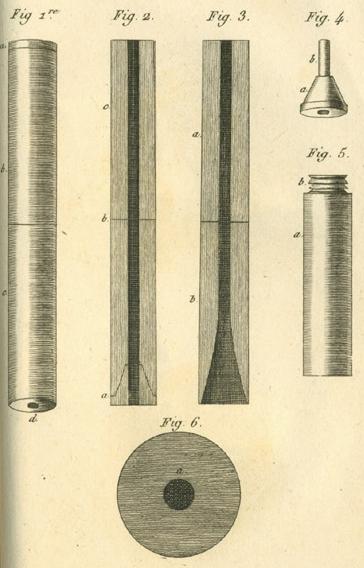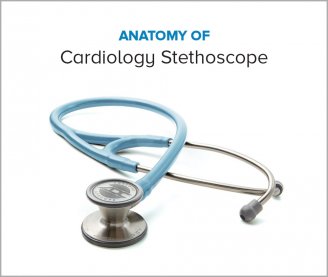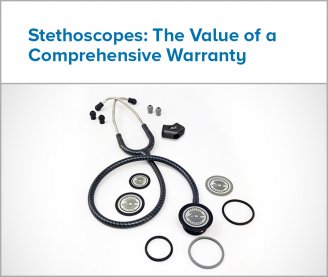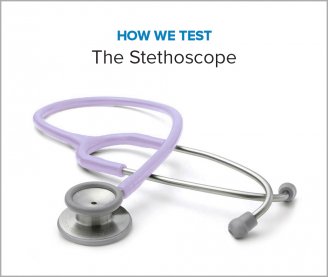- Products
- New Products
- Featured Products
- Color and Print Themes
- Blood Pressure Measurement
- NIBP / Vital Sign Monitors
- Digital Aneroid Sphygmomanometers
- Palm Aneroid Sphygmomanometers
- Pocket Aneroid Sphygmomanometers
- Pro's Combo Sphygmomanometers
- Multicuff Sphygmomanometers
- Clock Aneroid Sphygmomanometers
- Mercury Sphygmomanometers
- Home Blood Pressure Measurement
- Adcuff +
- Gauges
- Bulb & Valves
- Disposable Cuffs
- Reusable Cuffs & Bladders
- Sphygmomanometer Accessories
- Sphygmomanometer Parts
- Caseware
- CPR / Airway
- EENT
- Instruments & Accessories
- Laryngoscopes
- Penlights
- Pulse Oximeters
- Stethoscopes
- Thermometry
- Vital Signs Monitors
- Solutions
- About ADC
- Learning Center
- Support
- Blog
- Contact
History of the Stethoscope
The word stethoscope is derived from the two Greek words, stethos (chest) and scopos (examination). Apart from listening to the heart and chest sounds, it is also used to hear bowel sounds and blood flow noises in arteries and veins.(1)
Since mankind first began to study human physiology, and the physical characteristics associated with various ailments, it has been obvious that the heart plays a crucial role in our bodies. The sounds it makes, as well as the sounds that the surrounding organs, such as the lungs, make can be crucial indicators when examining a patient. The act of listening to these sounds, known as auscultation, has been refined using even more powerful tools to aid physicians in this crucial examination.
In the early 1800’s, and prior to the development of the stethoscope, physicians would often perform physical examinations using techniques such as percussion and immediate auscultation. In immediate auscultation, physicians placed their ear directly on the patient to observe internal sounds. (2)
This technique suffered from several drawbacks, the foremost being that it required physical contact between the physician and the patient and proper placement of the ear. In addition, the sounds observed by the physician were not amplified in any way, creating the possibility of missing key sounds that might indicate potential illness. Finally, the act of performing immediate auscultation could be awkward for both the physician and patient.
To resolve the limitations of immediate auscultation, a French doctor named Rene Theophile Hyacinthe Laënnec (1781–1826) at the Necker-Enfants Malades Hospital in Paris invented the first stethoscope in 1816. During an examination of a patient, he was afforded few diagnostic clues from application of a hand to the chest or the commonly used percussion method. Reluctant to perform immediate auscultation on the young female patient, he used a rolled sheet of paper to create an aural tube and facilitate auscultation. He was excited to discover that the heart sounds were clearly audible, and this discovery later lead to the development of the first device specifically for this purpose. (3) The first stethoscope consisted of a wooden tube and was monaural. Similar to a hearing aid known as an ear trumpet, it allowed the physician to more comfortably perform auscultation. (4)

Rene Theophile Hyacinthe Laënnec examines a patient in front of his students at Necker Hospital in this painting by Theobald Chartran.
It would not be until 1851 when the stethoscope had its next major improvement, which was to make the device bi-aural. Invented by Irish physician Arthur Leared, it was refined in 1852 by George Cammann for commercialization. Cammann also wrote a major treatise on diagnosis by auscultation, which the refined binaural stethoscope made possible. (4) Initially there was some concern that the bi-aural stethoscope could create hearing imbalances which might be problematic during examinations, but by the early 1900’s these concerns had largely subsided and the bi-aural stethoscope was a commonly used diagnostic instrument.
Throughout the 20th century many minor improvements were made to these iconic devices to reduce weight, improve acoustic quality, and filter out external noise to aid in the process of auscultation. Electronic versions of the stethoscope were introduced to further amplify sound. Stethoscopes are now available in a wide array of styles, with designs available for virtually every branch of medicine.
Despite all of the improvements and changes, the basic principle behind the stethoscope continues to remain the same; to provide physicians with the means to perform auscultation and identify specific sounds within the body.
References
- 1. (n.d.) South Australian Medical Heritage Society Inc, Website for the Virtual Museum Retrieved from http://samhs.org.au/Virtual%20Museum/Medicine/stethoscopes/stethoscopes.html
- 2. (n.d.) The Rose Melnick Medical Museum. A short history of stethoscopes. Retrieved from http://rosemelnickmuseum.wordpress.com/2009/12/01/a-short-history-of-stethoscopes/
- 3. Ariel Roguin, MD, PhD. (Clin Med Res. 2006 September; 4(3): 230–235.). Rene Theophile Hyacinthe Laënnec (1781–1826): The Man Behind the Stethoscope. Retrieved from http://www.ncbi.nlm.nih.gov/pmc/articles/PMC1570491/
- 4. Stethoscope. (4 January 2013 at 02:16). Retrieved from Wikipedia: http://en.wikipedia.org/wiki/Stethoscope#cite_note-1




